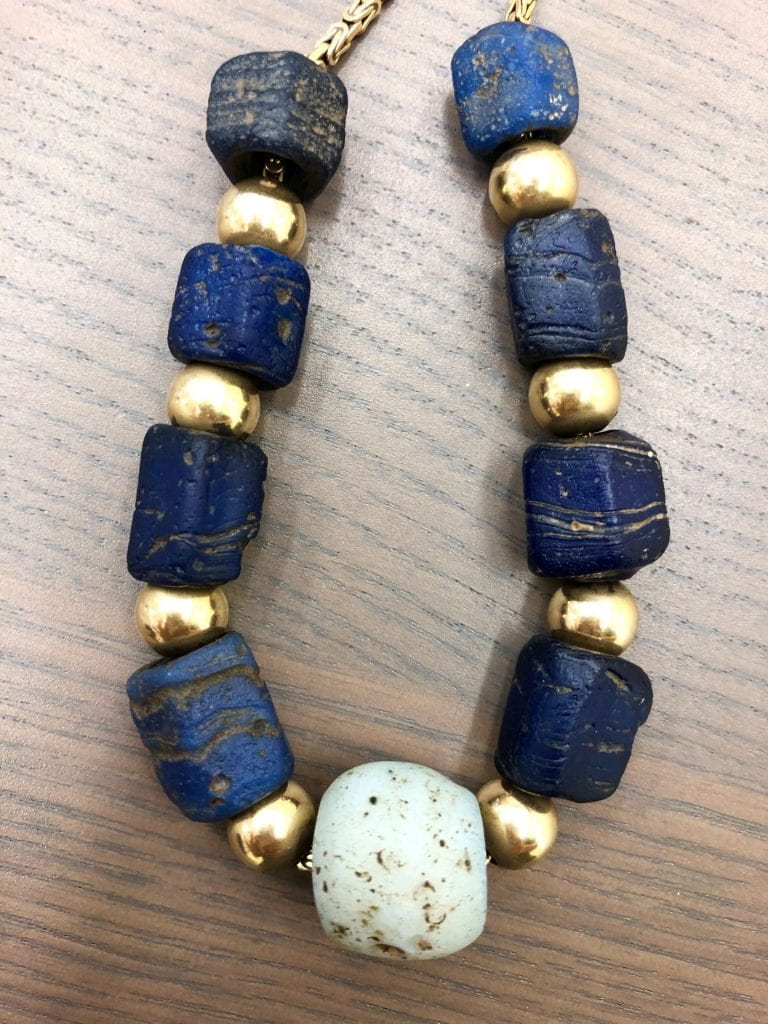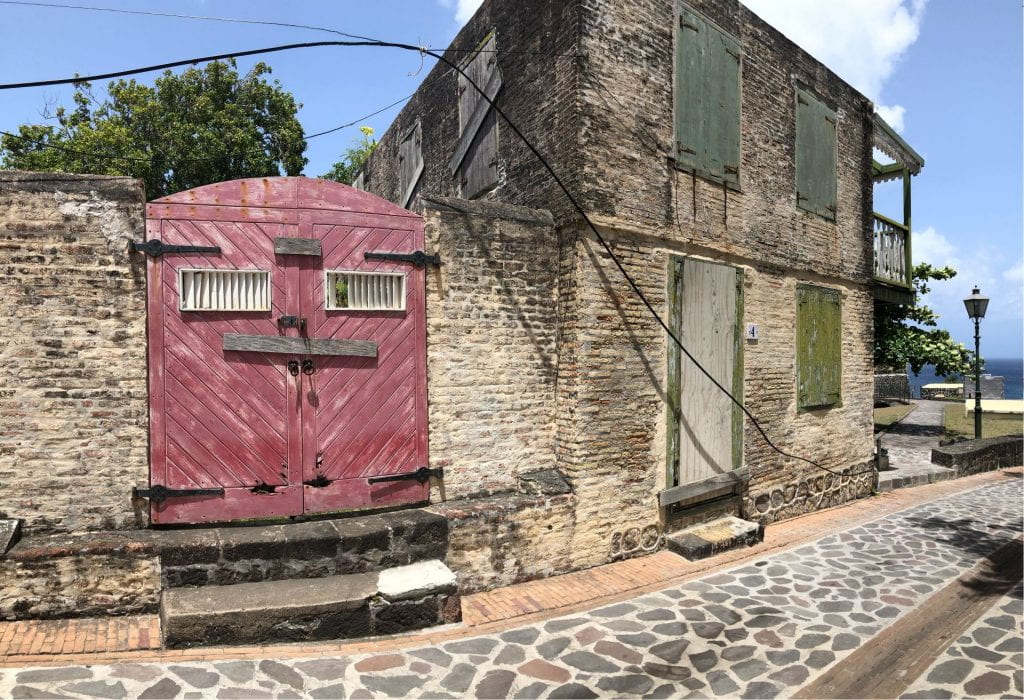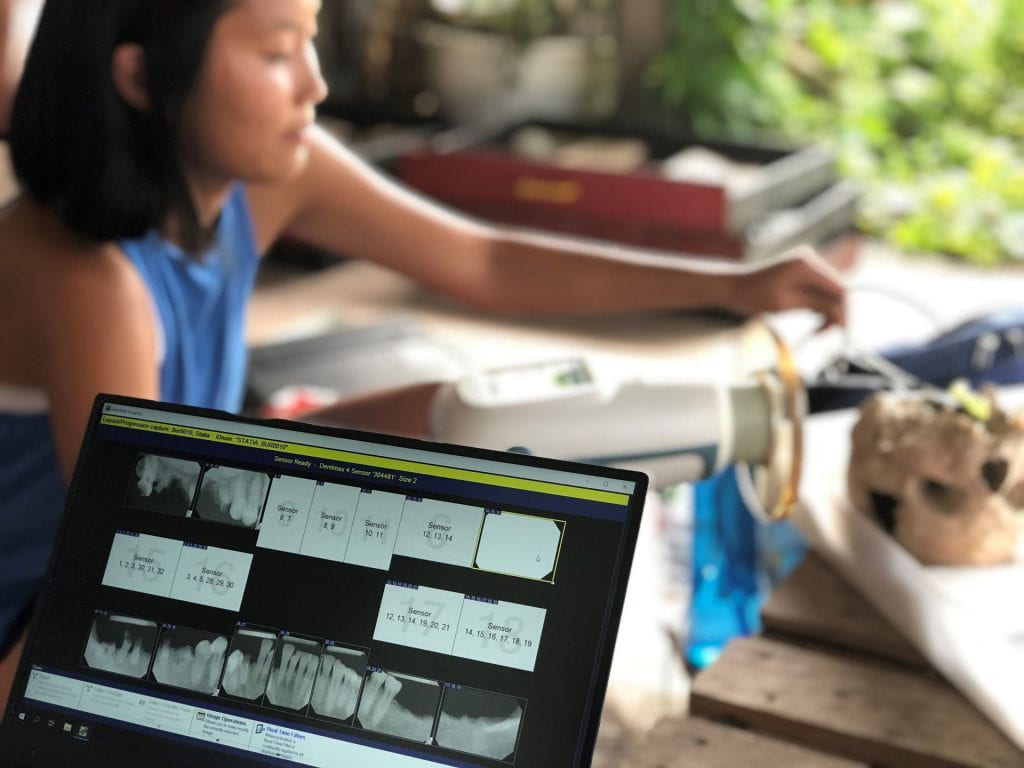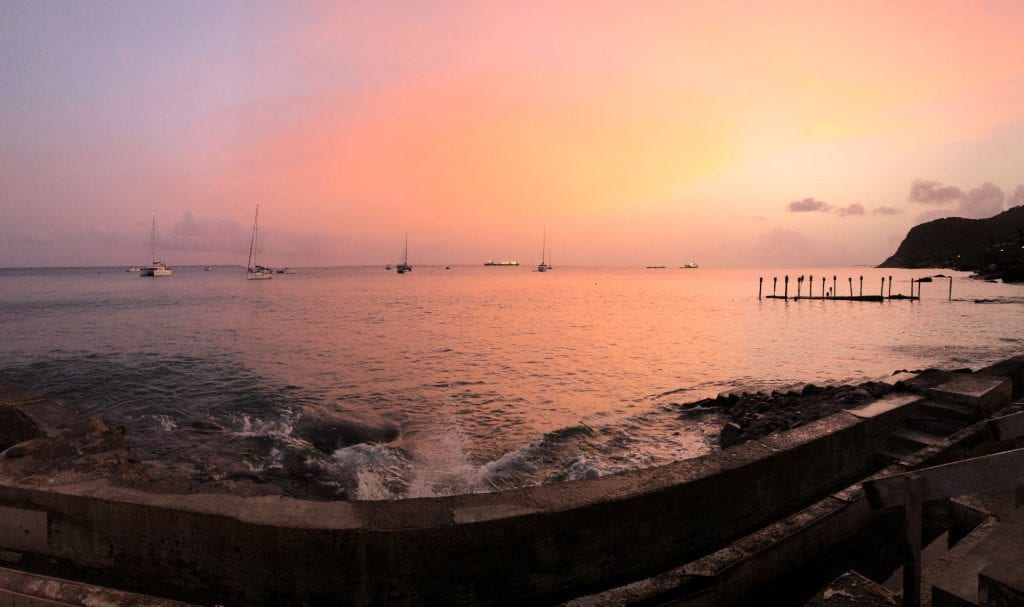Reminiscing About the Golden Rock and the Opportunity to Play Both Indoors and Outdoors
By Adrienne Stainton
Being one of the last to post their blogs, gives me the unique opportunity to look back on this summer’s National Science Foundation research project, Exploring Globalization Through Archaeology, as an overall experience. One half of the program was spent on the island of Sint Eustatius, outside excavating, dripping sweat while digging into a bluff side next to the ocean, dehydrated and perfecting goat calls. The other half, spent inside, searching through journal articles, analyzing artifacts, trying to wrap my head around foreign concepts, learning the pros and cons of modern technology, while sitting in an air-conditioned lab. While both had their perks and getting dirty on site will always be where I prefer to spend my time, I took away more than I anticipated from my time spent in the lab.
I could talk for hours about the island; reminiscing on all the memories, good times, bad times (that always makes for good storytelling later), techniques and methods used, discoveries and unique artifacts, and relationships formed that I value just as much as the experience itself. But what tends to get left out of all my ramblings to friends and family was the time spent doing research.
Going into this project I knew there were expectations. One being, every student was to produce a research poster that will be presented at both the NSF REU symposium following the end of the program and at the Society for American Archaeology (SAAs) conference that conveys all the research that went into a project of our choice. Simple enough, right? I sure thought so at the time. Technically a part of the forensic archaeology team, I worked on excavating the burials but wanted to do something outside my realm of biological anthropology, so I took a cultural approach to the burials. I decided (with help from my mentors) that I would look at the retention of cultural practices by the enslaved Africans shown through mortuary practices. Still I thought it sounded fairly simple.
My newly found respect for the amount of time and frustration that goes into doing research, was something I did not have when I started this project earlier in the summer. I was overwhelmed with where to start, what to focus on, which rabbit hole to go down, which ones I needed to be rescued from, what was important, what the results meant; let me remind you, all of this had to be figured out within three weeks. If it were not for the incredible guidance of my mentors and the TAs, their knowledge and experience of doing research, I don’t know if I would have come out the other side. From my fixation on particular artifacts and ideas to program malfunctions, I could not have done this without the support and constant push of those previously mentioned.
I must give a shout out to our group as a whole. As a nontraditional student (many of the students were close to a decade younger) being a part of an undergraduate research program can give one a wee bit of anxiety when you think about living situations, being a part of a peer group you don’t identify with much these days, and overall group chemistry. This group of amazing undergraduate researchers taught me so much. I was so impressed and taken aback with how much drive and passion they had, how much they persevere regardless of their back story and struggles, how much knowledge they had not only about anthropology but about the world and life. To see so much enthusiasm about where they are, where they’re going, and just the pure energy they bring forth, its motivating, uplifting, and boy is it ever contagious.
Our project may be over for now, but the SAAs will be here before we know it. When we meet again, we will all be one step closer to where we are trying to go, one step closer to finishing our degrees, and one step closer to being the people we’re trying to become.




